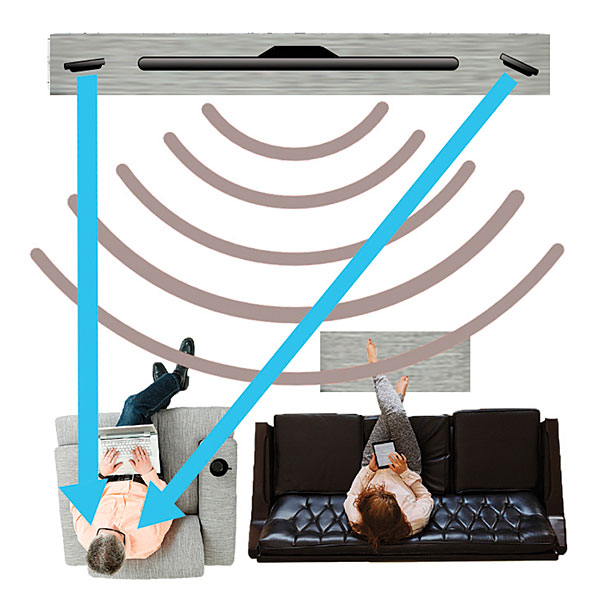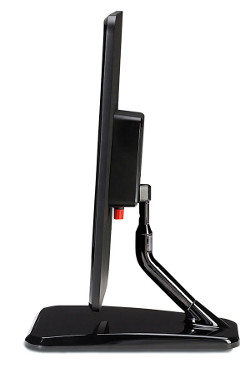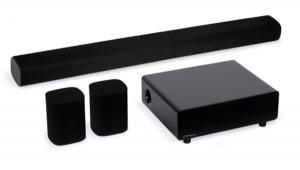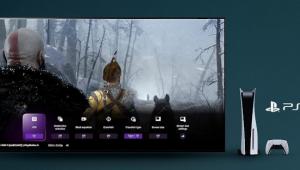Sonic Flashlight: HyperSound Clear Audio Beaming

Sound far-fetched? Not at all. Inventor Woody Norris demonstrated the technology behind such audio beaming more than a decade ago under the Hypersonic Sound banner. I remember when he stopped by our offices with an early prototype back in the early days of Sound & Vision. Actually, it may have been during the latter days of Stereo Review, predecessor to this magazine. His setup was kinda kludgy, but it worked, projecting a narrow beam of sound from one side of my office to the other. I often wondered what became of Woody and his remarkable invention. Would he find a consumer or commercial outlet for it?
My question was answered in a summer press release from Turtle Beach announcing a “first-of-its-kind” system to aid the estimated 48 million Americans who suffer from hearing loss and, as a result, have difficulty hearing their TV (or the sound system connected to it). Turns out the technology behind what Turtle Beach is calling HyperSound Clear is a direct descendant of the Hyper- sonic Sound system Norris invented way back when. I couldn’t have imagined a more perfect application.

Turtle Beach, best known for its high-end PC and gaming peripherals, plans to bring the audio beaming system to market late this year through a partnership with Audiology Management Group (AMG), which provides products and services to the healthcare industry.
Expected to sell for about $1,500, the HyperSound Clear system comprises a small, remote-controllable digital signal processor/control box and two compact panel speakers, but, instead of spraying sound around the room, these speakers effectively emit a highly controlled, narrow beam of sound that travels directly to the listener’s ears. (Actually, it’s way more complicated than that: Ultrasound is used as a carrier to create sound at the listener’s ears instead of at the face of the speaker. Visit hypersoundhearing.com for more information.)
 Turtle Beach says the result is a “highly immersive listening experience, similar to wearing headphones, in which listeners get clear sound where they want it, without affecting others in the room. Hearing professionals can even tailor the sound to specific hearing profiles and preferences.” The company also points to the results of recent clinical research in which 10 patients with mild to severe hearing loss experienced an improvement in sound clarity, especially speech discrimination, when using HyperSound technology.
Turtle Beach says the result is a “highly immersive listening experience, similar to wearing headphones, in which listeners get clear sound where they want it, without affecting others in the room. Hearing professionals can even tailor the sound to specific hearing profiles and preferences.” The company also points to the results of recent clinical research in which 10 patients with mild to severe hearing loss experienced an improvement in sound clarity, especially speech discrimination, when using HyperSound technology.
“Approximately 80 percent of people who go see a hearing healthcare specialist for the first time do so because they’re having trouble hearing and understanding the television, and we think HyperSound Clear will be a great entry-level hearing healthcare device that directly addresses that issue with hearing and enjoying home entertainment,” said Rodney Schutt, a senior VP at Turtle Beach.
Turtle Beach just might be onto something for the god-knows-how-many boomers who know they have a problem but hate the idea of wearing a hearing aid. Statistics show a gap of 5 to 7 years between when a patient first visits the audiologist and when he actually gets a hearing aid. HyperSound to the rescue.
More information is available at hypersoundhearing.com.


















































